A few weeks ago, I posted my thoughts on the 14 wines that comprised the top selection that we made as judges for the Colorado Governor’s Cup Wine Competition. Today I’m going to dive a little deeper into Colorado wine, where it’s come from, where it’s going, and give you my notes and scores for a bunch of Colorado wines that didn’t make it into the Governor’s Collection, but that I enjoyed when I tasted them blind as a judge.
Once Upon a Mountain Range
The history of Colorado’s wine industry goes back farther than most would imagine. In the days of the western frontier, as they did many other places, settlers to Colorado’s Grand Valley planted many crops, but two proved quite successful: fruit trees and grapes. By the late 1880s, people were already making small amounts of wine, and by 1899, government reports show more than 250 tons of grapes were harvested and 1744 gallons of wine were produced.
In the next 10 years, that crop would double in size, and then nearly double again just in time to be wiped out by the advent of Prohibition in 1916, along with the wine industries of so many other states, California included.

Things were slow to recover after the repeal of Prohibition. But by 1968, a dentist named Dr. Gerald Ivancie had decided that Colorado needed to return to its winemaking heritage, and so he planted some vineyards and opened Ivancie Cellars. Not one to do anything by half measures, Ivancie decided he needed a trained winemaker to help him, and for that, he looked to California.
Coincidentally, a young Warren Winiarski (who would go on to make the Cabernet that triumphed at the 1976 Judgment of Paris competition) had recently been given his notice. After helping Robert Mondavi establish his winery and making the initial wines, Mondavi’s brother Michael came back from his tour of duty in the National Guard to take over winemaking responsibilities.
When Winiarski got the call from Ivancie, he leaped at the chance to help start an enterprise from the ground up. Winiarski quickly convinced Ivancie to plant the first vitis vinifera vines in the state, and was responsible for making the first few vintages of Ivancie’s wine. Winiarski’s tenure would be short, for two years later the opportunity arose to purchase a prune orchard that would become Stag’s Leap Wine Cellars, but his work with Ivancie effectively launched the modern Colorado wine industry and set it on a path to produce high-quality wines.
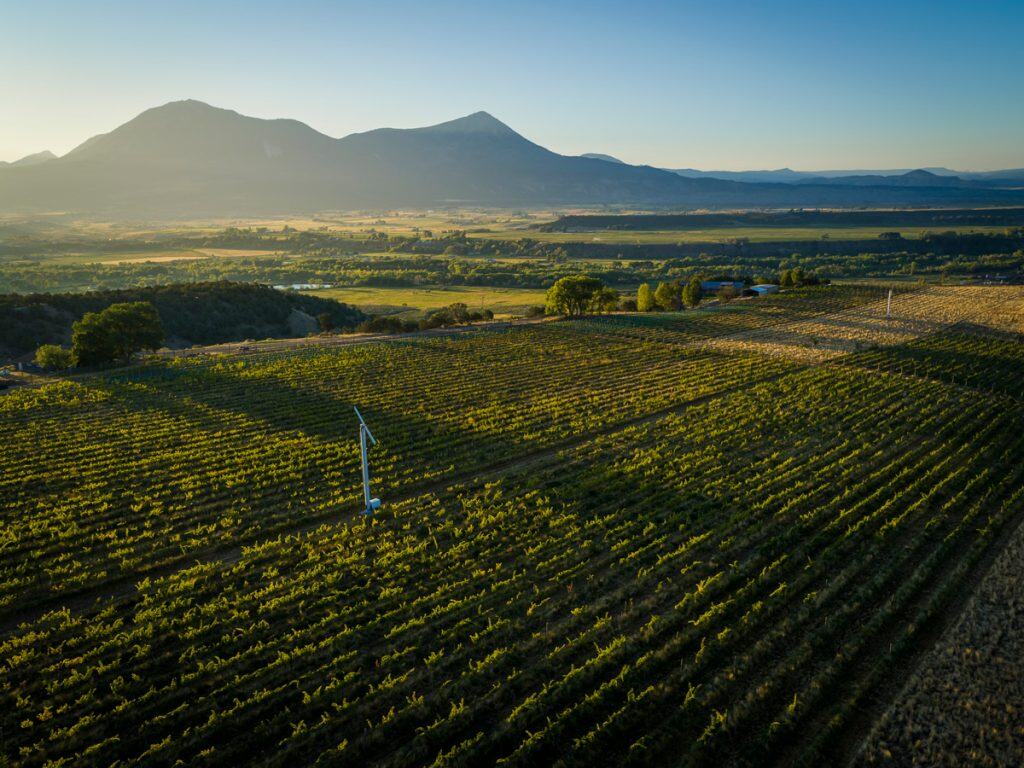
High Elevation Wine Country
Things didn’t exactly explode after Winiarski headed back to Napa. By 1990 there were a mere 5 wineries in the state. But things have picked up since then.
Colorado now boasts more than 170 wineries farming more than 800 acres of vineyards, as well as two established American Viticultural Areas, Grand Valley AVA and West Elks AVA. Most of the grapes are grown between 4000 and 7000 feet of elevation in what are generally “high desert” micro-climates, providing dynamic daytime and nighttime temperatures that make for excellent grape growing, along with challenges such as winter freezes and both early and late-season frosts. Indeed, just a couple of years ago, the state’s acreage was well north of 1000 acres of vines, but a cold snap in October of 2020 killed a significant number of grapevines.
Deservedly, the rural charm of Colorado’s wine country has been gaining some attention recently, including being named as a top 10 wine getaway destination by Wine Enthusiast in 2018, and “The New Sonoma” in the upcoming October issue of Food & Wine Magazine, thanks to my friend Jen Murphy who wrote the feature.
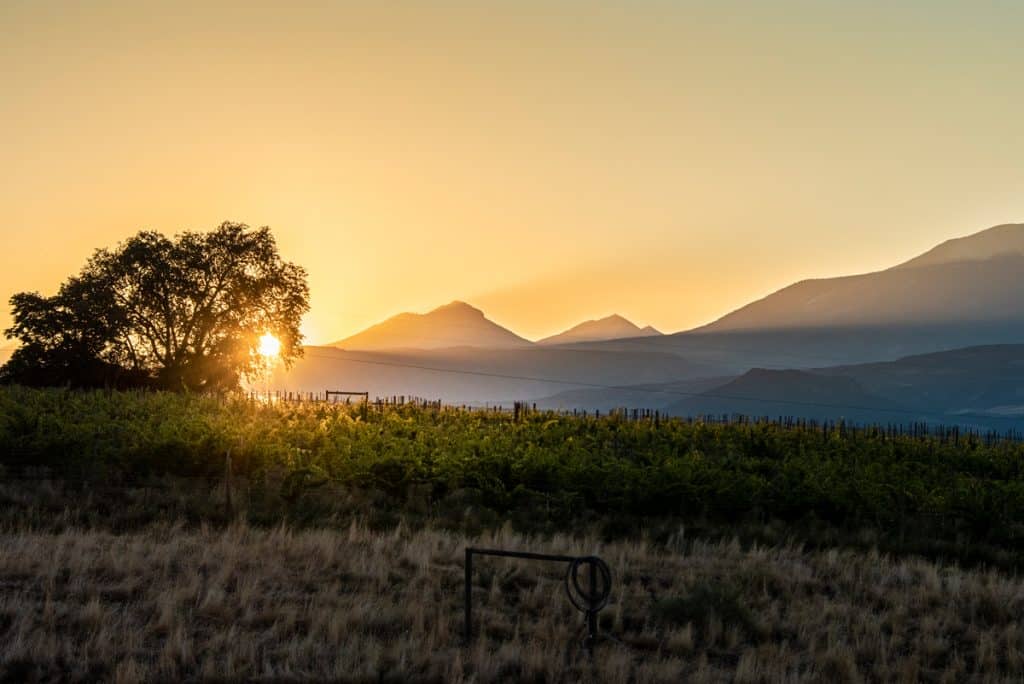
Great Potential, Improvement Needed
I’ve now judged the Colorado Governor’s Cup Wine Awards for four out of the past six years. In that time I’ve watched the wines improve, and more importantly (to my mind) I’ve watched the industry continue to branch out into new grape varieties and vineyard locations.
Colorado is now making some very respectable, high-quality wines that wouldn’t be out of place in any lineup of wines from California, Oregon, or Washington State (though it must be said, Pinot Noir ain’t a thing in Colorado, and probably won’t ever be thanks to the climate).
Having said that, the wines are not improving as fast as they should. In particular when it comes to winemaking.
The single biggest mistake I keep experiencing, and perhaps the easiest to correct is the overuse of new and/or heavily toasted oak. So many of the wines we judged in this most recent edition of the competition were blasts of freshly sawn hardwood, with tannins that grabbed hold of the sides of your mouth and leached every bit of moisture off the palate almost instantly.
This overuse of oak is a hallmark of many “emerging” wine regions in my experience, but Colorado has been cranking along for a while now, so they’ve lost the fledgling excuse in my mind. Frankly, most of the wines I’ve tasted from Colorado would be better if they used no new oak at all.
Unfortunately, there are also far too many wines in this competition that suffer from basic winemaking faults (volatile acidity, microbial issues, acetaldehyde) or are just horribly out of balance (possibly picked too late, picked too early, poorly sorted fruit, over-extracted, over acidulated, etc).
I’m not one of those folks on the permanent wine judging circuit, but I’ve judged enough competitions to know that they tend to attract far more of the lesser wineries than the great ones. Wineries at the top of their game tend to believe they have nothing to gain and everything to lose by entering competitions, whilst the unknown or less successful wineries are just the opposite.
Every competition I’ve ever judged has had its share of bummer wines, a number of which receive the ‘ol DNPIM (Do Not Put In Mouth) rating. Colorado is no different. But honestly, that number isn’t going down as quickly as it should in Colorado. The basics of hygenic, successful winemaking aren’t secrets these days and don’t require an enology degree to learn and employ successfully.
That’s easy for me to say from the comfort of this couch I’m sitting on, never having made a wine myself. But I do know commercially unviable wines when I taste them, and I’m still tasting far too many of them from Colorado.
Where Colorado is Headed
There are those who say that the future of Colorado’s wine industry is cold-hardy hybrid grapes and American grape varieties. Indeed, new plantings of hybrids like Verona, St. Vincent, Chambourcin, and others continue to increase. Especially in the wake of killing freezes like the one last October.
This year’s competition included a particularly nice rosé made from St. Vincent, but apart from those kinds of rare exceptions, I don’t find the wines made from these grapes compelling, despite their better performance in extreme conditions.
It would be one thing if there weren’t excellent renditions of vitis vinifera wines being made. But there truly are some excellent Cabernet Francs, Malbecs, Syrahs, Sauvignon Blancs, and Rieslings being made in Colorado. What’s more, I’ve now seen smatterings of other grape varieties that have me very excited. More Lemberger (but can we call it Blaufränkisch?) please. More Graciano, Cinsault, and Teroldego. Let’s try some Mondeuse, Schiava, Areni Noir, Pineau d’Aunis, Petite Arvine, Chasselas, Gringet and Altesse.
The uncertainties of climate change aside (and acknowledging that farmers need to have a crop to sell if they want to stay in business), if it’s possible to make these kinds of vinifera wines somewhere in the state, I believe they truly are the future. Colorado has yet to find the grapes that will make its best wines, and I hope the experimentation continues. There’s so much potential for Colorado wine, and I look forward to seeing it flourish.
Here are some notes on my favorite wines in addition to the ones I wrote about last month.
Tasting Notes
Wines are listed in descending order of score. I have put links to buy where available online. However, due to the smaller size of the Colorado wine scene, many of these wines are sold purely at winery tasting rooms.
2018 Mesa Park Vineyards Cabernet Franc, Grand Valley, Colorado
Dark garnet in the glass, this wine smells of cherry and cedar and cocoa powder. In the mouth, fine-grained tannins wrap around a core of plum and cedar and roasted nuts with dried herbs. Classic profile. Excellent acidity. Score: around 9. Cost: $31.
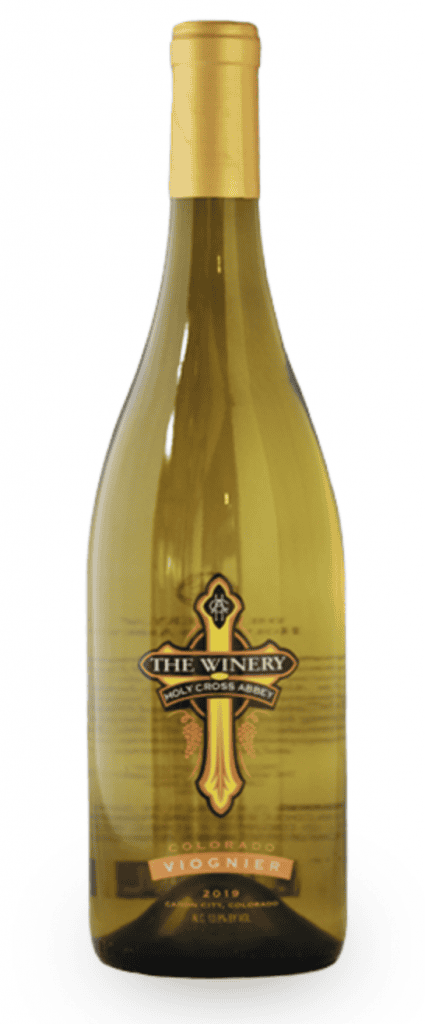
2020 Whitewater Hill Vineyards “Zero Below” Late Harvest Chardonnay, Grand Valley, Colorado
Pale greenish-gold in color, this wine smells of sweet apples, white flowers, and honey. In the mouth, white flowers and honey make for moderately sweet crystalline clear bright apple and pear flavors. Long finish. Juicy acidity. A pleasure to drink. 113 g/l sugar Score: around 9. Cost: $23. click to buy.
2019 The Winery At Holy Cross Abbey Viognier, Colorado
Palest greenish-gold, to the point of being nearly colorless, this wine smells of white peaches and apricots. In the mouth, crisp and lean peachy flavors mix with white flowers. Delicate and quite tasty, with good acidity and nice balance. Score: between 8.5 and 9. Cost: $20. click to buy.
2019 Snowy Peaks Winery Cabernet Franc, Grand Valley, Colorado
Medium garnet in color, this wine smells of dark plum and black cherry. In the mouth, bright boysenberry flavors and muscular, thick tannins coat the mouth. Lovely fruit, excellent acidity. Score: between 8.5 and 9. Cost: $26. click to buy.
2019 Vines 79 Wine Barn Syrah, Grand Valley, Colorado
Medium to dark garnet in color, this wine smells of blackberry and black pepper. In the mouth, spicy blackberry and white pepper flavors mix with dried herbs and faint tannins. Nice restrained oak. Decent acidity. Score: between 8.5 and 9.
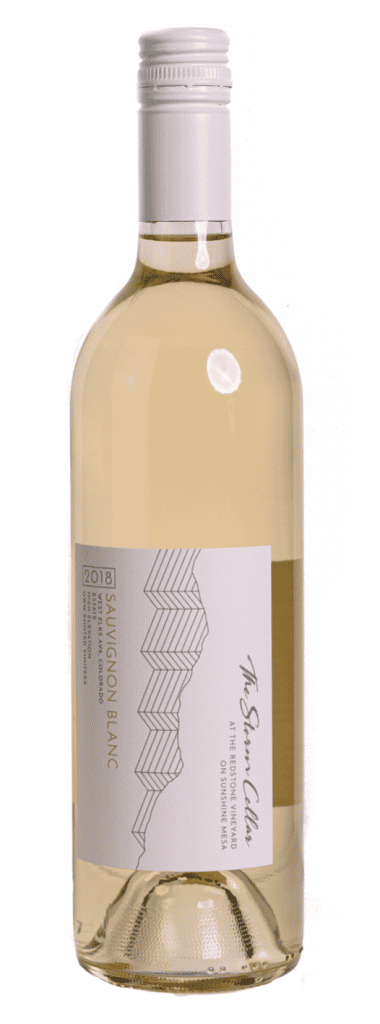
2020 Storm Cellar Sauvignon Blanc, Grand Valley, Colorado
Near colorless in the glass, this wine smells of kiwi and passionfruit, and green apple. In the mouth, lean green apple flavors have a nice brightness to them with a faint chalkiness. Excellent acidity. Textbook interpretation of Sauvignon Blanc. Score: between 8.5 and 9. Cost: $22. click to buy.
2019 Qutori Wines Syrah, Colorado
Medium to dark garnet in color, this wine smells of blackberry and cassis. In the mouth, blackberry flavors have a lovely saline quality and muscular, grabby tannins add structure and texture. Good acidity and length. Very tasty. Score: between 8.5 and 9.
2020 Continental Divide Winery Riesling, Grand Valley, Colorado
Pale straw-gold in the glass, this wine smells of orange pith and wet pavement. In the mouth bright lemon and grapefruit pith flavors are dry, crisp, and bright. Clean with a nice mineral tone and very nice acidity. Score: around 8.5. Cost: $30. click to buy.
2020 Fox Fire Farms “Summer” Dry Riesling, Colorado
Palest straw-green in the glass, this wine smells of lychee and tangerine with a hint of honeysuckle. In the mouth, faintly sweet honeysuckle and tangerine zest flavors mix with a nice wet pavement minerality. Excellent acidity. Score: around 8.5.
2020 Whitewater Hill Vineyards Riesling, Grand Valley, Colorado
Pale straw in the glass, this wine smells of pomelo pith and honeysuckle. In the mouth, honeysuckle and Asian pear flavors have a nice crisp wet-chalkboard minerality and nice acidity. 44 g/l of residual sugar. Score: around 8.5. Cost: $14. click to buy.
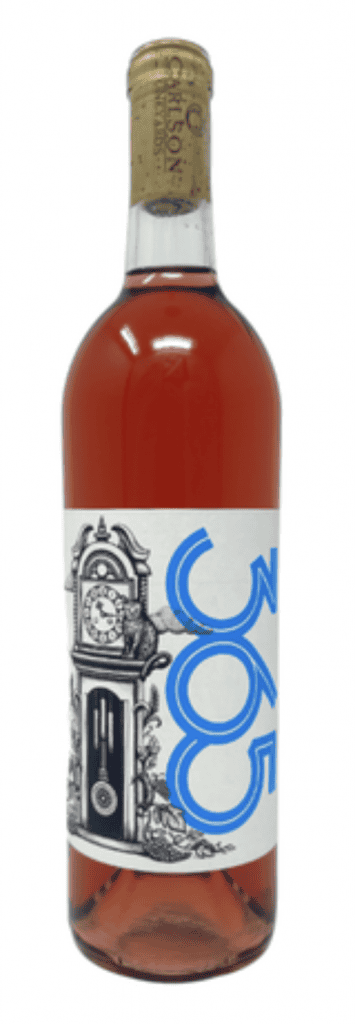
NV Sauvage Spectrum “Rsrv” White Blend, Grand Valley, Colorado
Pale gold in color, this wine smells of bruised apples and herbs. In the mouth, savory yellow herbs mix with apple and pear flavors with a decent acidity and nice clean minerality. An unusual blend of 61% Roussanne, 11% Viognier, and 28% Chardonnay. Labeled without a vintage. Score: around 8.5. Cost: $26. click to buy.
2018 Plum Creek Winery Petite Verdot, Grand Valley, Colorado
Dark garnet in color, this wine smells of blackberry and blueberry. In the mouth, bright blackberry fruit has nicely restrained tannins and a very nice tangy cassis and blueberry flavor. Decent acidity. Score: around 8.5.
2018 Williams Cellars Malbec, Delta County, Colorado
Very dark purple in the glass, this wine smells of blueberries and cassis. In the mouth, juicy blueberry and purple SweetTart flavors have a mouthwatering sourness to them and faint, fleecy tannins. Quite delicious. Score: around 8.5. Cost: $24.
2020 Carlson Vineyards 365 Rosé of Merlot, Grand Valley, Colorado
Light baby pink in color, this wine smells of watermelon and candied berries. In the mouth, surprisingly creamy watermelon and strawberry flavors have a slightly candied aspect but also a nice citrus snap. Decent acidity and length. Solid rosé. Score: around 8.5. Cost: $16.
Images of Colorado wine country courtesy of the Colorado Wine Industry Development Board.